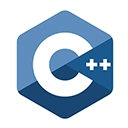C++20 Concepts are a powerful feature that bring enhanced type checking and expressive code to the C++ language. Concepts allow you to specify requirements on template parameters, making your code more readable and less error-prone. This guide provides an introduction to C++20 Concepts, including explanations and sample code to illustrate their usage.
1. What Are Concepts?
Concepts are a new way to express requirements on template arguments. They enable you to specify constraints on template parameters, making it easier to understand the expected types and behaviors of template arguments.
2. Example: Defining a Simple Concept
Here's a basic example of defining a concept for types that can be compared using the less-than operator:
template <typename T>
concept LessThanComparable = requires(T a, T b) {
{ a < b } -> std::convertible_to<bool>;
};
template <LessThanComparable T>
bool isLess(const T& a, const T& b) {
return a < b;
}
int main() {
int x = 5;
int y = 10;
if (isLess(x, y)) {
std::cout << "x is less than y." << std::endl;
} else {
std::cout << "x is not less than y." << std::endl;
}
return 0;
}
3. Concepts and Template Parameters
Concepts are particularly useful when defining template classes or functions. They provide clear constraints on the template parameters, reducing the likelihood of errors and making your code more readable.
4. Example: Using Concepts in Templates
Here's an example of a templated function that uses a concept to specify that the input type must be less-than comparable:
template <LessThanComparable T>
bool isLess(const T& a, const T& b) {
return a < b;
}
int main() {
int x = 5;
int y = 10;
if (isLess(x, y)) {
std::cout << "x is less than y." << std::endl;
} else {
std::cout << "x is not less than y." << std::endl;
}
return 0;
}
5. Conclusion
C++20 Concepts are a valuable addition to the C++ language, allowing you to express requirements on template parameters and enhance the readability and reliability of your code. By using concepts, you can create more self-documenting and robust code that is easier to understand and maintain.

